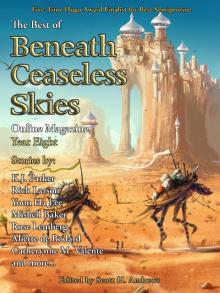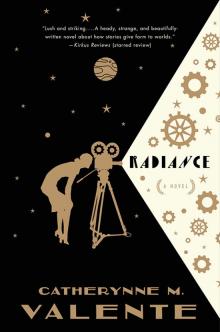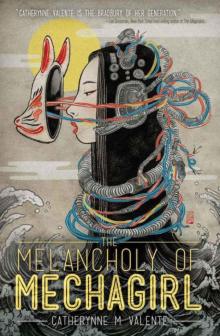


Cairo, Page 2
Max Rodenbeck
Shepheard’s famously huge, pistol-packing Montenegrin doorman was too far off to usher the ladies to safety. (Seven years later he was to be arrested for firing his gun point-blank into the pestiferous crowd of natives.) And now all pretense of dignity slipped away as Alfreda’s donkey stumbled. Encumbered by voluminous skirts, great-granny spilled into the dust in full view of the terrace voyeurs.
Ah, but rescue was at hand. A gallant Englishman, stopping in Cairo on his way back from India, happened on the scene. Young Herbert now leaped forward, doffed his cork-lined solar topi, and assisted the young lady to her tight-laced feet. A romance was born. After much hot pursuit—and some hard bargaining with Alfreda’s father, to whom Limeys were only a slice less crude than Yankees—Herbert carried Alfreda to Bombay as the wife of an officer in Her Majesty’s Indian Civil Service.
To tell the truth, family legend is unclear about whether my great-grandparents’ Donkey Incident took place at Shepheard’s Hotel or out at the Pyramids. Or, indeed, whether Alfreda actually tumbled from her mount (his version) or rather impressed her suitor by nimbly leaping off it (hers). However it may have been, the unshakable fact is that I owe my existence to a certain anonymous donkey of Cairo. So I trust that the many friends who encouraged and abetted the making of this book will forgive my extending foremost gratitude to that irascible beast.
Hard on his hooves comes Stephen Hubbell, without whose patient prompting The City Victorious would most surely have been vanquished. William Lyster gave generously of his time and invaluable wisdom. Antony Sattin and Carol Janeway provided much useful guidance. Grateful thanks are due to my parents, John and Elizabeth Rodenbeck, for bringing me here and for their enduring interest in Cairo; to Michael Jones, for pointers on the topography of the early city and on the ancient Egyptian language; to Hassan Abuseda, Ziad and Daisy Bahaeddin, Muhammad Ben Ahmed, Alice Brinton, Adel Fahmy, Paul Geday, Maria Golia, Bill Hamilton, Marise Hilal and the staff of Estoril, Sonallah Ibrahim, Barry Iverson, Siona Jenkins, Dr. and Mrs. Hassan Khalil, Magdi Mitwalli, Mia Monasterly, Samir Morcos, Trevor Naylor, Samir Raafat, Dr. Hassouna Saba, Mona Saba, Adel and Mahmoud Sabet, Norbert Schiller, Randa Shaath, Hania Sholkamy, David Sims, Pierre Sioufi, Nihal Tamraz, Tracy Tullis, and Mercedes Volait; and to the night shift at the Grillon.
I also owe a tribute to the many scholars who have traveled the same path, or parts of it, before me. I often found myself skirting around subjects for the simple reason that previous writers had already treated them with unmatchable thoroughness. Besides, I would hate to subtract one bit from the pleasure of discovery that any Cairo enthusiast will find in works such as the novelist James Aldridge’s classic biography of the city—published thirty years ago and strangely never reissued—or the scholarly urban histories of Janet Abu Lughod and André Raymond, or Susan Staffa’s excellent social history of the medieval city, or Diane Singerman’s masterful study of modern society in the traditional quarters, or the incredibly prolific productions of historians David Ayalon and the great Gaston Wiet. This list could go on much longer, but then its place should really be at the back of the book, where indeed it will be found in the shape of a bibliography.
Above all, I owe an immense debt to the fortitude and intelligence of Karima Khalil, who shepherded this work unswervingly through deserts and green valleys alike.
Cairo, November 1997
Chapter One
BEGINNINGS
Now the eighth descendant of King Osymandias…founded Memphis, the most illustrious city in Egypt. For he sought out the most fitting site in the land, the place where the Nile divides into the Delta; wherefore it came to pass that the city, situated, as it were, at the gateway to Egypt, was master of all the commerce passing upstream to the country above.
—Diodorus Siculus, The Library of History, first century B.C.
ABU ABDALLAH MUHAMMAD Ibn Battuta set out from Tangier on the second day of the month of Rajab in the seven-hundred-and-twenty-fifth year of the Hejira. He was twenty-two years old and overpowered, he would later recall, by a burning need to enter the illustrious sanctuaries of Mecca and Medina. He traveled on foot mostly, taking a full year and a half to cover the 4,000 miles between his hometown by the Strait of Gibraltar and the Muslim holy places of Arabia. Yet when his pilgrimage was complete, Ibn Battuta’s thirst for adventure still raged. He was not to go home, in fact, for thirty years—not before seeing firsthand the Arab cities of Jerusalem, Damascus, and Baghdad, and the Christian emperor’s capital at Constantinople; not before coasting African reefs to slave-trading Zanzibar; not before sliding by sledge across the frozen realm of the khan of the Golden Horde to the splendid cities of Bokhara and Samarkand; before scaling the Hindu Kush and descending to the humid plains of the Indus and Ganges; not before serving as chief Malikite cadi of Delhi and as ambassador from its fierce and capricious sultan to the court of China, which he reached by way of Ceylon, monsoon-drenched Sumatra, and the bustling port of Canton. Ibn Battuta would not rest in sleepy little Tangier again until he had seen all of the known world (aside, of course, from the crude and violent lands of the Western Christians). Wishing to reach the very edges of civilization, he would not be satisfied until he had toured the delightful but doomed towns of Muslim Andalusia in the north and the gold-rich city of Timbuktu across the Sahara to the south.
Ibn Battuta followed a simple rule in all his 75,000 miles of wandering: he vowed never to travel the same road twice. Yet there was one town he stopped at no fewer than five times. It was a matter of course that he should, since this was not only the largest and richest city of the age and the capital of the mightiest kingdom, it was also the crossroads of the busiest routes of trade and pilgrimage from east to west and north to south.
Cairo was, quite simply, the navel of the world. It dazzled Ibn Battuta like no other city. To his secretary Ibn Juzayy he was to dictate this encomium:
Mistress of broad provinces and fruitful lands, boundless in profusion of buildings, peerless in beauty and splendor, she shelters all you will of the learned and the ignorant, the grave and the gay, the prudent and the foolish, the noble and the base….Like the waves of the sea she surges with her throngs of folk, yet for all the capacity of her station and her power to sustain can scarce hold their number. Her youth is ever new despite the length of days. Her reigning star never shifts from the mansion of fortune.
When Ibn Battuta first arrived, in A.D. 1326, Cairo was indeed at a peak in its fortunes. For three centuries it had been the greatest of Muslim cities. But this town was already ancient long before the coming of Islam. Successive cities had grown, flourished, decayed, and been reborn on this site beginning no less than 4,000 years before. The town was so old that its inhabitants even at the start of that barely conceivable antiquity believed that this was where Creation itself had taken place.
The spot where they said life began looks like an odd choice today. It lies out in the ragged northeast suburbs of the great city, not far from the end of a Metro line. Industrial plants jostle here with ranks of dwellings slapped together in raw red brick and slung with washing. Heedless of momentous happenings in ages past, shoppers haggle by the butchers’ stalls and pyramids of melons that enliven the main street until it peters out abruptly in a fenced-off acreage of flat, brown dust. The emptiness, in this city where land is coveted like gold, is eerie.
The barren land is the site of a long-gone town called On.*1 Gone, that is, except for a lone monolith, a single shaft of solid pink granite that soars defiantly out of the rubble. This is a 4,000-year-old obelisk, the last of an avenue of obelisks that once led to the great temple of On. Its stone siblings succumbed to different fates: they toppled and were broken up for stone, or got hauled off whole as trophies, dubbed Cleopatra’s Needles, and were shipped away down the Nile and across the sea to grace stripling cities by the murky rivers Hudson and Thames.
Farther back, at the beginning of time itself, nothing existed of Cairo or On or of anything else. There was not even a N
ile, the ancient Egyptians believed. The entire universe was a colorless, proportionless ooze. Then, for no reason in particular, out of this element something solid formed. It swelled into a mound in what was to become the courtyard of the great temple of On. The mound was later called the Benben and was stylized as a pyramid.
Out of this Benben rose the sun, taking the form of Atum, the creator god. He was a glowing orb atop the pyramid, or a flaming phoenix, perhaps, or maybe even a man-shaped god—the fluidity of ancient myth makes his image difficult to grasp. Whatever his form, Atum stood here lighting the emptiness. Then, say the sacred texts that the priests of On inscribed in pyramid-tombs across the river to the west, Atum aroused himself “so that he should create orgasm.” He engendered twins. From his nose snorted Shu, the fiery god of air. From his mouth flew Tefnut, the vaporous goddess of moisture who still gives her name to the Arabic word for spitting. Shu and Tefnut begat Geb and Nut—earth and sky—who begat the rest of the nine chief gods of On: Osiris, Isis, her sister Nephthys, and the outsider Seth, who burst unexpectedly from Nut’s womb. Witnessing the result of his exertions, Atum burst into tears. His tears became mankind and populated the world.
This is what the priests of On said happened here. But the priests of Memphis, a rival city whose ruins lie across the Nile, twenty miles off at the opposite edge of modern Cairo, disputed their version of events. It was not Atum of On, they asserted, but Ptah of Memphis who created the world; not Atum the sun, but Ptah the “beautiful of face” who conceived of all, then uttered it into being with his Word, and fashioned man in his image.
But On and Memphis had certainly not yet advanced enough to quarrel when another seminal event occurred in their vicinity.
The scheming god Seth was the villain of ancient Egyptian myth. A fork-tailed canine with a long, drooping snout, he stalked the rim of the valley, bellowing and howling and stirring up sandstorms. Seth was the master of the Red Lands—the desert—but he was a lonely god. In his solitude he envied his brother Osiris, happy ruler of the Black Lands watered by the Nile. Seth conceived a plot. He held a banquet. After wining and dining his brother, he jokingly invited him to lie down inside a beautiful box. No sooner had Osiris climbed in than Seth slammed the lid closed and heaved the box into the great river. The goddess Isis, grieving, searched high and low for the body of her beloved brother. Finding his corpse on the shores of what is now Lebanon, she impregnated herself with his seed. Isis gave birth to falcon-headed Horus.*2 The child grew up, nurturing dreams of vengeance, amid the reeds of the Nile Delta. When he came of age, Horus set out to find his father’s killer.
But Seth was lusty as well as cunning. His winsome young nephew pleased him. When he came upon the falcon-headed youth at a place between On and Memphis that the Egyptians later called Kher’aha, the Site of the Battle, Seth assaulted Horus. The two gods rolled in the dust of the Nile bank, transformed into hippopotamuses. They fought for three days and nights, and maybe even years. Seth plucked out Horus’s eagle eye, but Horus tore off his uncle’s testicles. In the end Thoth, the baboonlike (but sometimes ibis-headed) god of wisdom and writing, intervened. He retrieved the eye of Horus. He held a trial at On, or perhaps Memphis, and the fighting gods were reconciled.
Like all good myths, this most ancient one prisms into numberless versions. Sometimes the fight of the gods is glossed as a complicitous carousal. More often Horus represents the triumph of outraged justice, which is why the falcon or eagle or phoenix became a sign of victory while the forked tail of Seth evolved into a mark of Satan.*3 Modern scholars wrangle as much as the ancients over the details, but concur that the story of the battle of the gods symbolized religious and political fusion. It may illustrate the struggle between the early kingdoms of Upper and Lower Egypt and their subsequent unification. Then again, Seth and Horus may represent the conflict between the settled people of the Nile Valley and nomads from Asia, the arrival of whom some antiquarians say was responsible for catalyzing advanced civilization here 5,000 years ago.
The point is that Kher’aha, the mythic site of the battle between Seth and Horus, was where the great metropolis of Cairo sprawls today. At the confluence of continents, at the narrow neck of the Nile Valley just before it spreads into the flat water-maze of the Delta, this has always been a place where elements mingle and cultures collide. Invaders have come and gone: the Asiatic Hyksos, Libyans, Ethiopians, Assyrians, Persians, Greeks, Romans, Arabs, Turks, French, British, and recent hordes of tourists. The cities here have risen and fallen, but always this spot has been the crucible of Egypt’s fate.
LEAVING ASIDE MYTH, science asserts that permanent settlement started at Cairo near the end of the last Ice Age. It was then, around 10,000 years ago, that global warming scorched the grasslands which once bordered the Nile Valley, sending their rich wildlife of elephants, lions, and giraffes scurrying into the African hinterland. It diminished the river, taming its 10-million-year-old habit of scouring a deeper and deeper gorge in its hard bed of Eocene limestone. Instead, the Nile now flooded once a year, in late summer, rising by twenty feet to fill the narrow valley from desert to desert. Receding in the autumn, it deposited silts eroded from the distant volcanic mountains of Ethiopia. The silt thickened by a millimeter a year, forming a loamy and rich soil that is today some thirty feet deep.
Together these changes brought about the end of hunter-gatherer cultures that had flourished in what is now the Sahara. By necessity these Paleolithic wanderers—many of whose 150,000-year-old flint blades have been found near On—settled in the valley for good. With time they learned to husband animals and raise crops. They discovered how to fashion pottery and bricks for building walls. As the Egyptians’ technical skills improved and so allowed wealth to accumulate, larger towns grew up elsewhere in Egypt. Still, in the region of what would become Cairo there seem to have been only a scattering of villages.
Seventy years ago archaeologists excavated a Neolithic site near Maadi, a leafy Cairo suburb half an hour by Metro from the remains of On. On the edge of the desert, behind what is now a satellite tracking station, they uncovered the traces of a densely settled village surrounded by sturdy walls. Aside from fine pottery they found delicate vessels bored out of basalt, woven textiles, and slate cosmetic-mixing palettes that were skillfully carved in relief with designs of plants and animals. Here, in about 4000 B.C., the dead were buried with a few favorite possessions. Their bodies were laid down on their right sides facing the rising sun, just as they are in Cairo to this day.*4
Of these Maadi-scale villages, On appears to have been the most important. Mythology and recorded history suggest that it may have been the locus of a solar cult and a center of astronomical observation from the earliest times, but the archaeological details of its beginnings are obscure. This has not stopped some scholars from positing a specific date. The date they give is July 19, 4241 B.C. At 4:58 a.m. to be precise—which is to say at the moment when Sirius, that brightest but shyest of stars in the northern heavens, peeked over the dawn horizon at the latitude of On.
What allows such a precise guess is the fact that the astronomers of On appear to have solved one of nature’s puzzles far in advance of anyone else. They noticed that while the “natural” calendar that follows the cycles of the moon makes a year of only 354 days, the solar year is longer. The sun scale was more in tune with the needs of seasonal agriculture (not to mention sun worship), but it was tricky finding a fixed point from which to calculate its year. Stargazers remarked that in the late spring Sirius hid for two and a half moons, then leaped into view in midsummer, just when the river began to overflow its banks. From one rising of Sirius to the next was exactly 365 days, a span that seemed to match the solar cycle. The Egyptians divided this solar year into twelve months of thirty days each, with five extra days for an annual festival.
Having launched their elegant calendar, however, the Egyptians soon found they were losing one day every four years. The trouble was that Earth dawdles maddeningly. It took n
ot the neat 365 days that the astronomers of On expected, but 365¼ for it to revolve around the sun. (Much later, when the Romans decided to adopt the Egyptian calendar, Julius Caesar hired an Alexandrian named Sosigenes to solve this problem. He came up with the idea of leap years. This was clever, but then he bungled the Egyptians’ symmetry by juggling the lengths of months into our current irregular terms.) The loss of these quarter days meant that the Egyptian calendar slipped slowly out of sync. Its New Year fell on the exact same day as the rising of Sirius only in four years out of every 1,461 Egyptian years.
From a work called De Die Matali, by the Roman writer Censorinus, nineteenth-century scholars knew that one of these exact coincidences took place in about A.D. 142. Calculating back in time, they surmised that Sirius’s rising and the Egyptian New Year had coincided in about 1320, 2780, and 4241 B.C. Since the Pyramid Texts, inscribed when these structures were built in the twenty-fifth century B.C., showed an already thorough familiarity with the 365-day calendar, the only conclusion to draw was that its use must have begun at the earlier date. The civilization of On, wrote the great American Egyptologist James Henry Breasted a century ago, thus furnishes us with the earliest fixed date in the history of the world.














